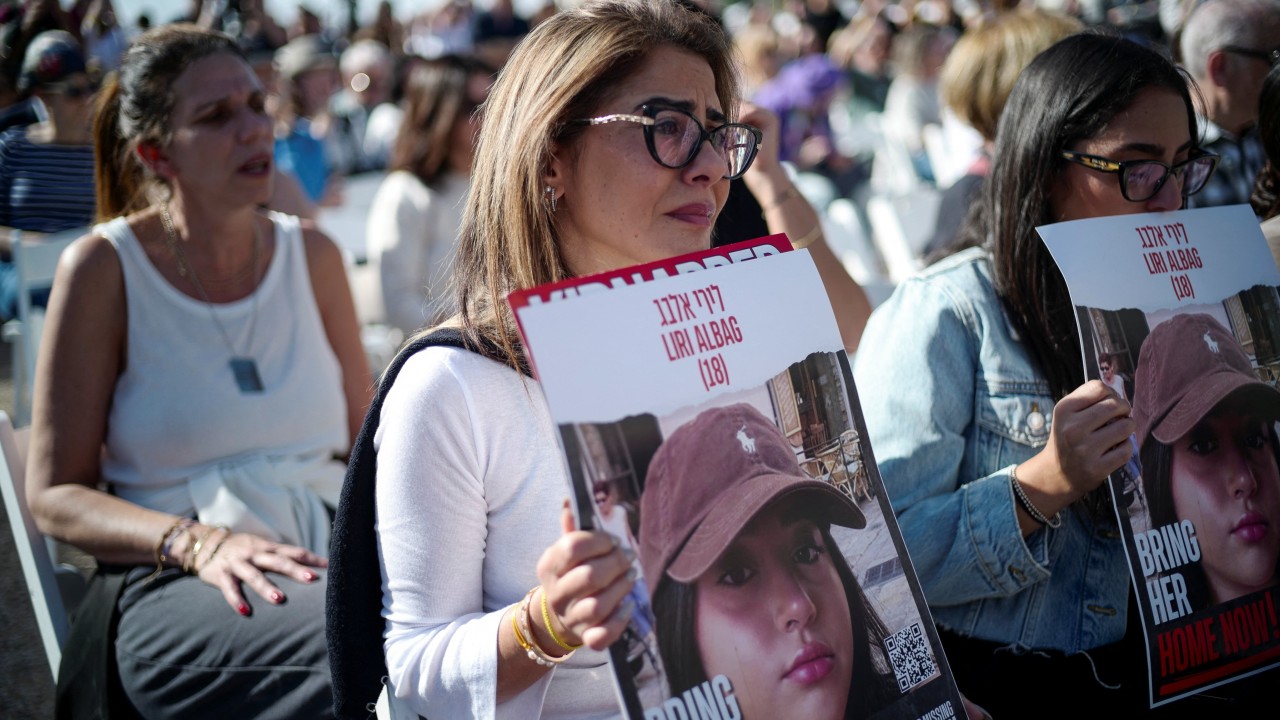Preah Kunlong (The way of the spirit)
2017 - Film & Video (Film & Video)
18:43 minutes
Khvay Samnang
Originally commissioned for documenta 14, Khvay Samnang’s two-channel video work Preah Kunlong (The way of the spirit) takes land politics, resource extraction and Indigenous Cambodian resistance as its primary concern. Created in collaboration with the classically-trained dancer and choreographer Nget Rady — who is also the performer in the video — Preah Kunlong powerfully utilizes a lexicon of gestures and movement to point toward the need for embodied forms of knowledge and understanding amidst the mechanistic frameworks of rapacious development, which are threatening not just forests and Indigenous communities in Southeast Asia, but also worldwide. More specifically, Preah Kunlong offers a proposal for the language of the body to exercise what political ecologist Nancy Lee Peluso has called “counter-mapping”, a form of “critical cartography” that has been practiced by Indigenous forest communities in Southeast Asia to strengthen claims on their traditional territories and resources by defying hegemonic mapmaking methods, which have long abetted strategies of colonial rule and resource extraction. To the Chong people of the Areng Valley in Southwestern Cambodia, knowledge is transmitted through speech and body, and land is mapped through embodied methods rooted in ancestral and oral histories. Khvay first developed an interest in the Chong people because of their high-profile protests in defiance of a hydroelectric dam development (Cheay Areng Dam), which threatened to destroy not only the largest remaining expanse of rainforest in Southeast Asia, but also their way of life. He stayed with the community for a short period of time in order to learn about their spiritual practices and beliefs, and as he came to understand their everyday belief in animism, he worked with Rady to develop an embodied language that could potentially point toward the communities’ relationships to particular animals, water sources and land. As Rady stomps, squirms, writhes, slithers and trembles against mud, water, bark, and rock, his body takes on the form of a moving map, and sounds of his body press against the viewer’s ears, creating a sensory bridge between the tactile and the moving image.
Khvay Samnang’s work critically examines the interlocking nature of ritual and politics, the humanitarian and ecological impacts of globalization, colonialism and migration, and the cultural-material histories of exchange that have shaped the Southeast Asia region. Working in performance, film and video, photography, sculpture and installation, his research-based practice draws heavily upon traditional cultural rites, dance choreography, spiritual iconography, and methods of critical remapping. Frequently collaborating with local communities or other artists, Khvay is a founding member of Stiev Selapak, an art collective dedicated to reappraising and commemorating Cambodian history and resuscitating visual practices disrupted by civil war and the Khmer Rouge regime, and has exhibited a diverse body of work that deals explicitly with issues of environmental degradation, extraction of natural resources, and the suppression of the rights of Indigenous communities. Hearsay, intuition, direct exchanges with people, and a belief in dreams and premonition often prompt Khvay Samnang who then follows stories he believes require intervention. Approaching what he considers to be universal themes through the Cambodian context, his works deal with unknown yet important events or current contentious social issues for his surrounding community. In his works spanning photography, video, sculpture and performance, the artist frequently uses simple and playful gestures as visual language to shade new lights onto of historical and cultural events and a means for resisting to the polarizing language of dominant media and legal powers covering the issues.
Colors:
Other related works, blended automatically
» see more

© » KADIST
Khvay Samnang
2014The video Rubber Man continues exploring issues related to land use, also noticeable in his Untitled series (2011)...
Related works sharing similar palette
» see more

© » KADIST
Shimabuku
2006For the two-channel work Asking the Repentistas – Peneira & Sonhador – to remix my octopus works Shimabuku asked two Brazilian street singers to compose a ballad about his previous works with octopi (in which he created traditional Japanese ceramic vessels to catch octopi, with a fisherman who took him on his boat to test them out as we can see on one of the channel)...

© » SOUTH CHINA MORNING POST
Opinion | How the word ‘hostage’ used to mean something quite different to its modern definition, as the Israel-Gaza war rumbles on | South China Morning Post Advertisement Advertisement Hostages who were abducted by Hamas gunmen during the October 7 attack on Israel are handed over by militants to the International Red Cross in an unknown location in the Gaza Strip on November 30, 2023...

© » KADIST
Burak Delier
2013Burak Delier’s sculpture Homage to Balotelli’s Missed Trick is a symbol of resistance to the demand for success and performance...
Other works by: » Khvay Samnang
» see more

© » KADIST
Khvay Samnang
2014The video Rubber Man continues exploring issues related to land use, also noticeable in his Untitled series (2011)...
Related artist(s) to: Khvay Samnang » Arin Rungjang, » Erin Gleeson, » Neuflize Vie, » Phnom Penh
» see more

© » KADIST
Arin Rungjang
2017246247596248914102516… And then there were none narrates a semi fictional account centered around the ambiguous history of the Democracy Monument in Bangkok, and on the aftermath of the 1973 demonstration of 400,000 people who marched against the military junta from Thammasat University to the monument...
Related works found in the same semantic group
» see more

© » KADIST
Shilpa Gupta
2014These hand drawn maps are part of an ongoing series begun in 2008 in which Gupta asks ordinary people to sketch outlines of their home countries by memory...

© » KADIST
Gareth Moore
2006Uncertain Pilgrimage is an ongoing project in which Moore draws from his unplanned travels in recent years...



